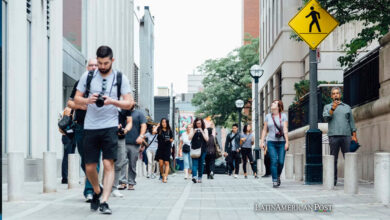How Has the Pandemic Impacted the Creative Industries?
Cultural and Creative Industries were one of the most affected during the 2020 crisis, as these have activities that depend mainly on physical contact.

The Woman Post | Diana Sedano Valdes
Listen to this article
The worst crisis of the last two centuries has left difficulties, as well as opportunities. Indeed, it has seen the highest drops in GDP in the world, and inequality rates have risen. The pandemic has been an opportunity for those already wealthy (the growth of wealth accelerated even during the lockdowns). However, the most vulnerable have suffered even more a decline in their quality of life. Cultural and Creative Industries (CCIs) were one of the most affected, as these are the activities that depend mainly on physical contact. Considering that the work of creatives and artists is widely informal and precarious, the effects of a crisis of such magnitude can be expected to be powerful. Unlike other industries, it is difficult to calculate the impact on all countries (especially in the global south) and formulate public policies that respond to their needs because there is a lack of information about this sector. However, UNESCO's new study addresses the economic impact of the crisis on these industries.
The year 2020 highlighted the need to collect information to determine the impact and request government support; the biggest companies were the ones who sought to promote studies on their industry. Recently, UNESCO compiled several studies and conducted new ones to assess the impact at the global level. What has been the impact of the pandemic on the Cultural and Creative Industries?
The creative economy can be understood, according to Newbigin, as those services that determine new points of view, provoke delight, stimulate emotions, build knowledge, and enrich people's lives; they have an economic value, but also a cultural one. In its study, UNESCO focuses on activities linked to cultural and natural heritage, performing arts and festivities, visual arts and crafts, books and press, audiovisual and interactive media, and design and creative services. The hardest-hit industries have been those in which presence and social grouping are essential. Theater, live music, concerts, exhibitions, and cultural and natural heritage has been the most affected. 90% of museums worldwide remained closed during 2020, and only the Madrid book fair was able to take place out of the 13 international book fairs.
Also read: MOST POWERFUL FASHION WOMEN IN THE ORANGE ECONOMY
According to UNESCO's study, the fall in the sector's contribution to the national GDP has been between 20% and 40%. The pandemic generated losses of US$ 750 billion – not counting externalities in other industries and activities –, representing 10 million jobs lost. In addition, MERCOSUR, UNESCO, IDB, SEGIB, and the OEI pointed out that 52% of cultural and creative enterprises in Latin America had a decline in revenues of more than 80% in 2020. The current crisis has catalyzed the digital transition in the Cultural and Creative Industries. Companies that were already in the digital world found growth opportunities in the pandemic, evidenced by the increase in OTT streaming platforms.
New leaders are now attracted to CCIs. Several politicians see them as an element of innovation and have adapted their agendas to talk about it. Culture and art are essential and sources of communication that can be of interest for the exercise of power. States could neither have national unity nor recognition without transmitting symbols through cultural expressions. Therefore, efforts to generate information on this industry must increase and help design more inclusive public policies.




